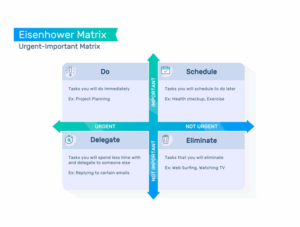Every teacher has been there. You walk into your classroom before the sun is up, a fresh cup of coffee in hand, ready to tackle the day. But as the bell rings and students pour in, your carefully constructed plan seems to vanish into thin air.
Between lessons, impromptu parent meetings, and a mountain of papers to grade, the day blurs into a whirlwind of controlled chaos. You look at your to-do list at 3 PM and realize it’s longer than it was at 7 a.m.
This feeling of being perpetually behind is a shared burden among educators. We pour so much of ourselves into our students that our own time, energy, and well-being often get placed on the back burner. For years, I watched colleagues—brilliant, passionate teachers—burn out, not because they didn’t care, but because they couldn’t keep up with the relentless demands of the profession.
But it doesn’t have to be this way. Effective time management isn’t about working harder; it’s about working smarter. It’s about building a system that allows you to be an incredible educator without sacrificing your life outside the classroom.
The First Step: Know Your Time, Not Just Your To-Do List
Before you can manage your time, you need to understand where it goes. The biggest mistake most of us make is focusing solely on the “what”—the tasks on our list—without considering the “when” and “how long.” For the next week, conduct a simple time audit.
For every 30-minute block of your day, write down what you were doing. Were you teaching? Grading? Answering emails? Lesson planning? This exercise reveals your hidden time sinks and your most productive hours, providing a realistic baseline from which to build.
Strategy 1: Batching and Theming Your Tasks
Think about how a factory operates. They don’t switch from building a car engine to sewing a seat cover every five minutes. They have stations dedicated to a single task. We can apply this same principle, known as task batching, to our teaching lives.
- Grade Everything at Once: Instead of grading a handful of papers whenever you have a free moment, dedicate one or two specific time slots each week to grading. Set a timer, put on some music, and power through. Your brain will be primed for the task, reducing the mental fatigue of constantly switching gears.
- Plan Your Week on One Day: Theme one afternoon or evening a week for lesson planning. Having a dedicated “Planning Day” ensures you’re thinking about the curriculum and student needs in a comprehensive way, rather than scrambling for a lesson the night before. Separate planning into chunks.
- Email Blocks: Don’t let your inbox control your day. Check and respond to emails at specific times—perhaps before school, during lunch, and before you leave. This prevents constant interruptions and allows you to stay focused on your students.
Strategy 2: Prioritization Using The Eisenhower Matrix
Not all tasks are created equal. The Eisenhower Matrix helps you categorize your tasks into four quadrants, allowing you to focus on what truly matters.
- Urgent & Important (Do Now): These are tasks with a deadline that directly impact student learning or safety, such as an administrator’s urgent request or a student’s immediate concern.
- Important & Not Urgent (Schedule): This is where the magic happens. These are tasks that are crucial for long-term success but don’t have an immediate deadline. This includes long-term lesson planning, professional development, and building relationships with students. Schedule specific time for these tasks to prevent them from becoming urgent.
- Urgent & Not Important (Delegate): These tasks demand your immediate attention but don’t significantly contribute to your core goals. Think about a parent volunteer who needs a specific supply list. When possible, delegate these to an aide or a student helper.
- Not Urgent & Not Important (Eliminate): These are the time wasters, such as endless scrolling on social media or excessive classroom decorating. Ruthlessly eliminate these from your schedule.

Strategy 3: Leverage Technology and Automate Where Possible
Your smartphone and computer aren’t just for distraction; they’re powerful productivity tools.
- Go Digital with Grading: Platforms like Google Classroom and SeeSaw allow you to grade and provide feedback digitally, often with features that automate or streamline the process. Learn how tools you may already use, like Google Classroom and Google Docs, can be leveraged for better time management by exploring Google for Education’s website.
- Use Digital Planners: Ditch the paper planner and use a digital calendar like Google Calendar or a project management tool like Trello. You can easily drag and drop lessons, set reminders, and share plans with co-teachers.
- Create Templates: The next time you have to write a newsletter, send a permission slip, or create a bell ringer, save it as a template. This saves you from reinventing the wheel every time a similar task arises.
Strategy 4: The Power of No and Setting Boundaries
This is perhaps the most difficult—and most important—tip. As teachers, our inclination is always to say “yes,” but every “yes” to a new request is a “no” to something else—whether it’s planning, grading, or personal time.
- Protect Your After-Hours: Set a firm time when you stop working. When that time hits, close your laptop, put your phone away, and don’t look at it again until the morning. This boundary is crucial for preventing burnout and fostering a healthy work-life balance.
- Communicate with Administrators: If your workload feels unmanageable, don’t be afraid to have a conversation with your K-12 administrator. Explain your workload and ask for help prioritizing. A good administrator understands that a healthy teacher is a more effective teacher.
The To-Do List that Never Ends
Here’s the hard truth: your to-do list will likely never be empty. The key isn’t to finish it all; the key is to manage your time so you can tackle the most important tasks with focus and intention, freeing you from the constant pressure of a ticking clock.
Implementing these strategies won’t just make you a more efficient teacher; it will give you back your personal life, reignite your passion, and allow you to show up as your best self for your students, day after day.
You’ve got important career goals — we have the graduate program to get you there. Check out our available graduate degree programs to advance your career today!




